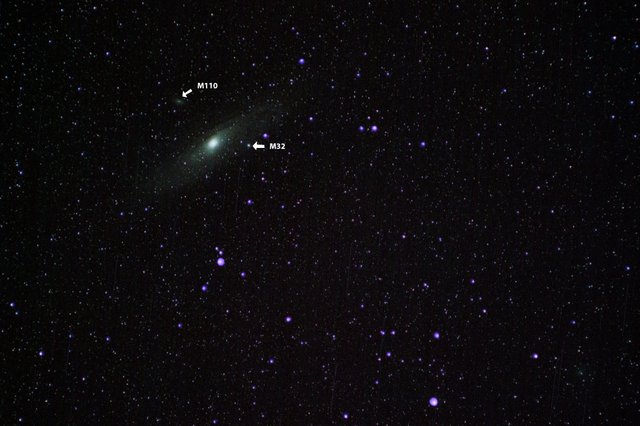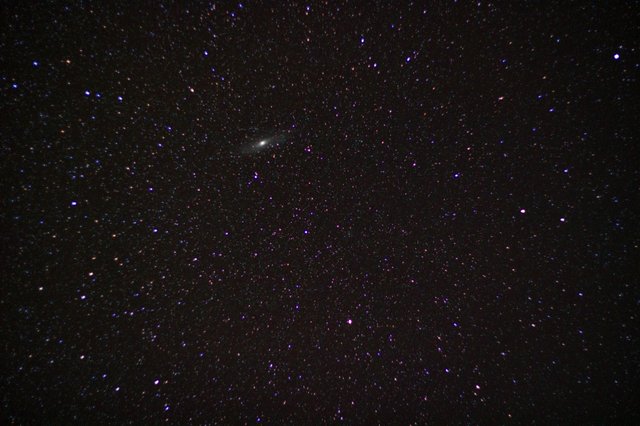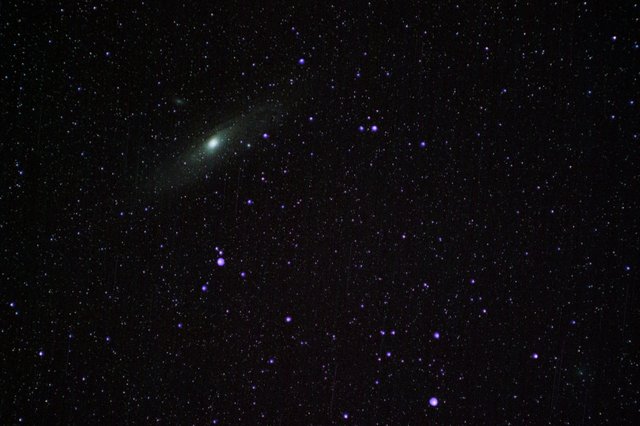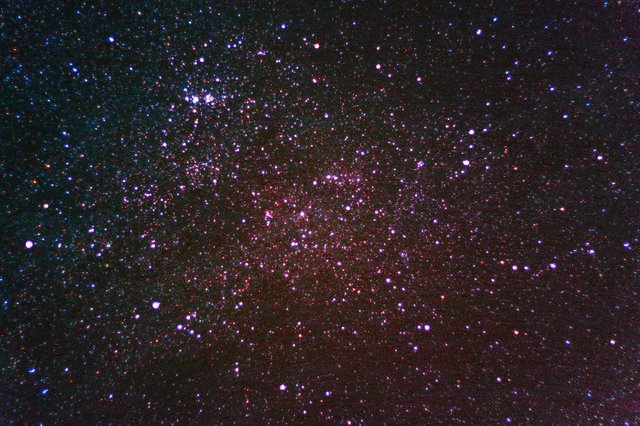Trying to capture Andromeda Galaxy only with DSLR
Andromeda Galaxy, also known as M31 is galaxy that is 2.5 million light years far from Earth and it's the nearest big galaxy to the Milky Way. First time that someone ever saw this galaxy with telescope was Simon Marius back in 1612. There are 2 satellites that you can see when you are photographing Andromeda Galaxy, one is Messier 110 and one is Messier 32.

| Camera | Lens | Shutter speed | F-stop | ISO |
|---|---|---|---|---|
| Canon 600D | Tair 11A | 2.5 sec. | f/2.8 | 6400 |
Now, let me show you how I photographed this and what equipment did I used for this project.
Equipment:
- Canon 600D
- Canon 50mm 1.8
- Tair 11A 135mm 2.8
- Tripod
- Remote shutter for Canon cameras
For finding Andromeda I have used application for Android called "Stellarium". You can also find some other apps that will help you find Nebulas, Constellation and other Galaxies but nothing is good as Stellarium. Stellarium can help you finding what you want really easy by using sensors that your phone has and just pointing with your phone in the sky it can show you what are you looking at.
After I have found Andromeda I positioned my camera with 50mm lens just to see how it looks. This was sort of like a test shot that came really nice, not bad for old Canon and inexpensive lens.
Calculation that I have used is called 500 rule, by dividing 500 with your focal length and you will get how long can your exposure be without getting star trails in your photo. So for my Canon 600D which has crop sensor I had to multiply crop factor with my focal length to get real focal length. So lens that I used first was 50mm by multiplying it with 1.6x which is crop of my camera I get real 80mm focal length. And dividing 500 with 80 I get around 6.25 seconds of exposure. So that is maximum exposure that I can get for using 50mm lens on my crop sensor to avoid star trails.

| Camera | Lens | Shutter speed | F-stop | ISO |
|---|---|---|---|---|
| Canon 600D | Canon 50mm | 5 sec. | f/2 | 6400 |
This test photo came out of 21 photos that I stacked by averaging them into one relatively noise free with better details than taking only one photo. I used software called "Sequator" for averaging them and exported that photo into TIFF so I can edit it in Photoshop. Result is pretty good although my camera sensor is old and I didn't have star tracker to get longer exposure.

| Camera | Lens | Shutter speed | F-stop | ISO |
|---|---|---|---|---|
| Canon 600D | Tair 11A | 2.5 sec. | f/2.8 | 6400 |
This is way better result than 50mm. I used almost tripled focal length than in previous example. I also did my calculation by 500 rule and got around 2.5 second exposure that will avoid star trails. Because I got just 2.5 to take photo I had to take a lot of photos to get better details on my photo. I did 65 exposures for this result and stacked them in Sequator. Editing time was around 30 minutes to get this kind of result.
And one bonus photo from last night. This should be Heart and Soul Nebula but it doesn't look like it, I guess that I need better equipment for that. Photo looks interesting but you can't see any of Nebula, only red tint that has but no detail at all.

I hope that in near future I will buy better thing and share my results with you.
I hope that it was interesting for you to see what you can do with such a crappy equipment, it's actually my first time taking photo of Andromeda and I'm really happy with this result. Have a great day! :)
Divnoća. :3
Baš sam hteo da te uputim na Stellarium :)
Stellarium koristim sigurno 2 godine vec. :D
This post has been voted on by the SteemSTEM curation team and voting trail in collaboration with @curie.
If you appreciate the work we are doing then consider voting both projects for witness by selecting stem.witness and curie!
For additional information please join us on the SteemSTEM discord and to get to know the rest of the community!